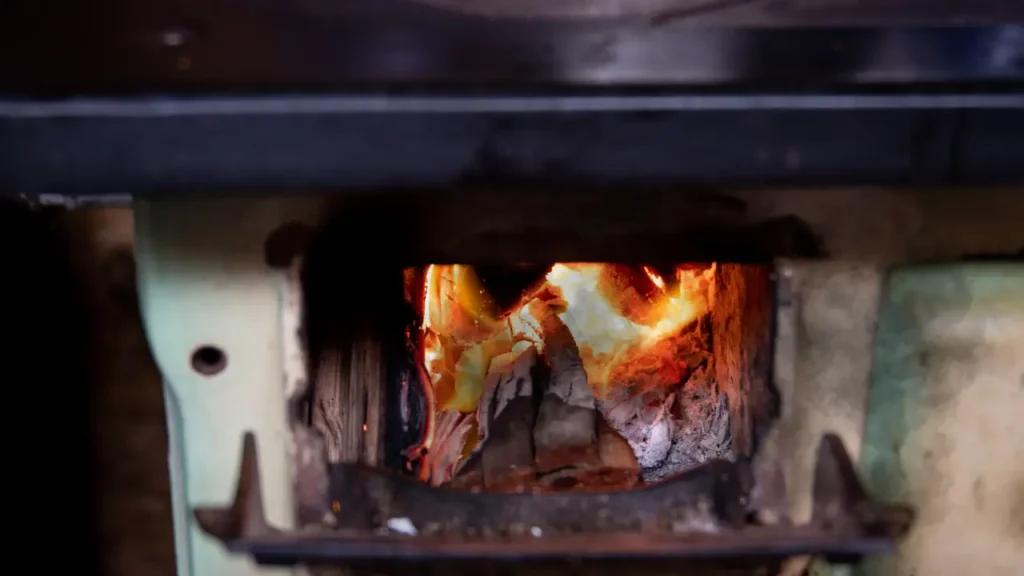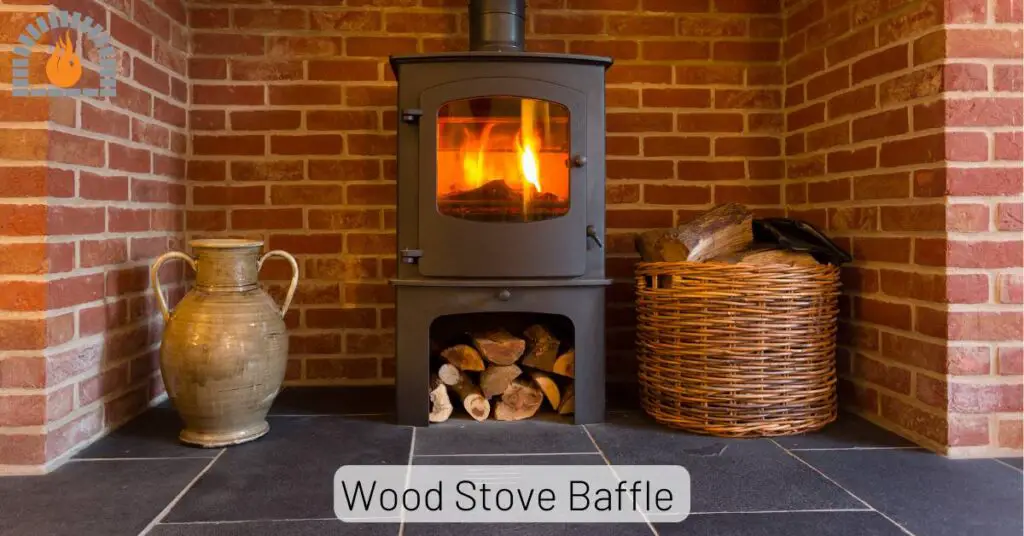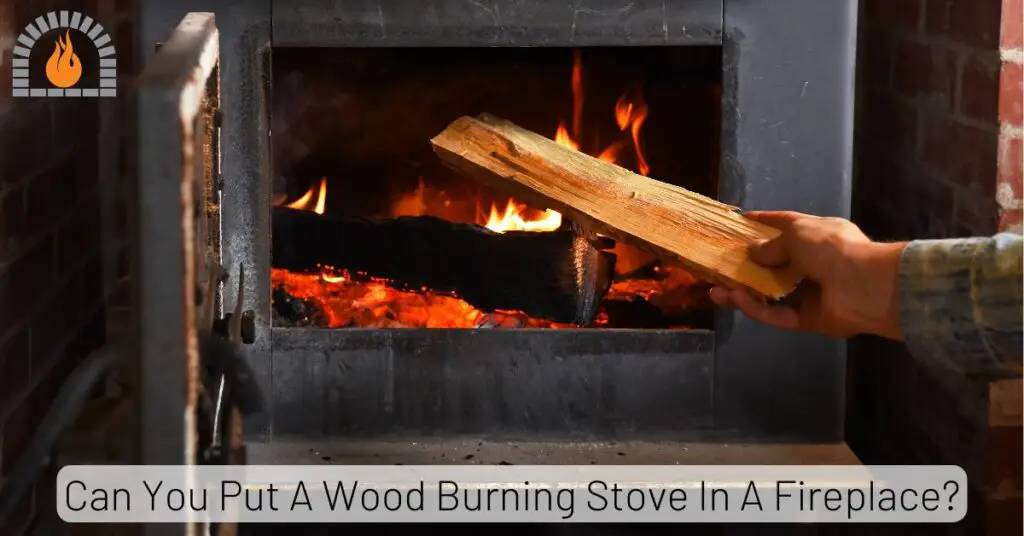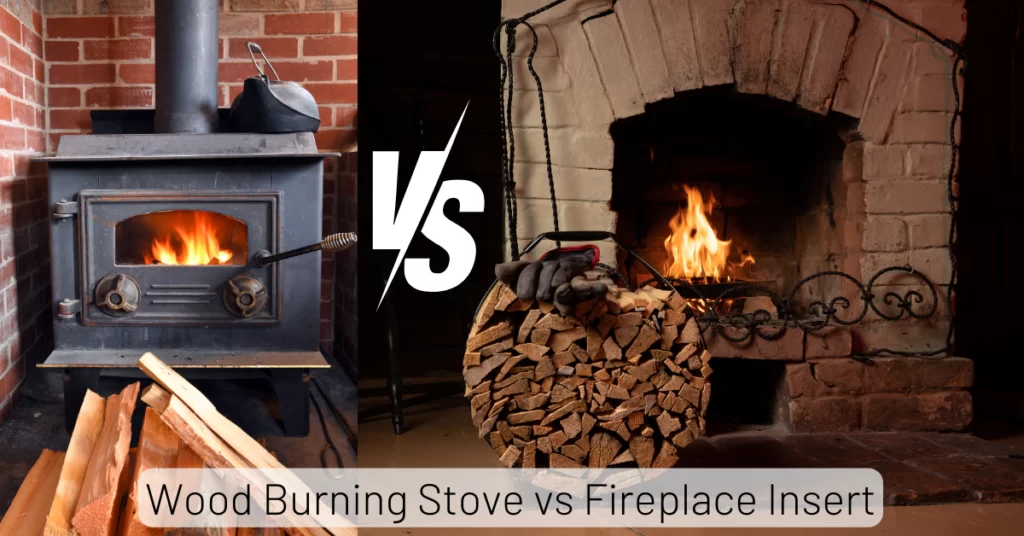There’s nothing quite like the warmth and ambiance of a wood stove, especially on a cold winter day. However, for many homeowners, the experience is occasionally marred by the wood stove smoke in the house.
When this happens, it’s essential to address the cause promptly, as wood smoke can pose serious health risks and indicate underlying issues with your stove or chimney setup. Why wood stove smoke in house?
One of the most common reasons smoke backs up is due to poor draft. Draft is essential in directing smoke out through the chimney. When draft is weak, it means the smoke doesn’t have enough force to exit the stove and ends up in your home instead.
Let’s dive into the main reasons wood stove smoke backs up into a home and explore solutions to keep your stove working effectively.
How Wood Stoves Work
Wood stoves are designed to create a draft that pulls air (and smoke) up through the chimney and outside of the home. This draft is generated by the difference in temperature between the hot air from the burning wood and the cooler air outside, creating a vacuum that forces the smoke up and out.
When everything is working properly, smoke doesn’t enter the living space. However, if there’s an issue with draft or other factors, smoke can back up, causing discomfort and potential hazards.
Why Wood Stove Smoke in House?
Several factors can cause smoke to spill back into the house rather than going out the chimney as intended. These include problems with the chimney draft, blockages, changes in air pressure, or even the type of wood you’re burning.
Understanding these causes can help you identify the issue and take corrective action.
Poor Draft or Chimney Pressure
One of the most common reasons smokes backs up is due to poor draft. Draft is essential in directing smoke out through the chimney. When draft is weak, it means the smoke doesn’t have enough force to exit the stove and ends up in your home instead.
- How Draft Works: A good draft occurs when the temperature difference between the hot air in the stove and the cooler outside air creates a vacuum effect, pulling the smoke out.
- Causes of Poor Draft: Poor draft can be caused by an improperly designed or installed chimney, low outside temperatures, or even obstructions in the chimney or flue.
When the draft is insufficient, smoke stagnates or even reverses, leading to smoke-filled rooms.

Cold Chimney Syndrome
Another common culprit behind smoke in the house is cold chimney syndrome. When the chimney is cold, especially after a period of inactivity, it may resist creating the draft needed to pull smoke upward.
- Why It Happens: Cold air is denser than warm air, which can cause it to sink and obstruct the upward flow of smoke.
- How to Fix It: Preheating the chimney by lighting a small kindling fire or placing a heat source near the chimney can help create a warm air draft. This step often encourages proper draft flow, reducing smoke issues.
Wind and Atmospheric Pressure Changes
External weather conditions can significantly impact your wood stove’s performance. Wind, particularly strong gusts, can create pressure imbalances that force smoke back down the chimney.
- Effect of Wind: High winds, especially in open or elevated areas, may push against the chimney’s top, causing downdrafts.
- Changes in Atmospheric Pressure: Sudden shifts in atmospheric pressure, such as those that happen during storms, can also affect the draft, causing smoke to come inside. Installing a chimney cap with a wind guard can help minimize these downdraft issues.
Blocked Chimney or Flue
One of the most common reasons for wood stove smoke backing into a house is a blocked chimney. Creosote buildup, bird nests, or other debris can obstruct the airflow, preventing smoke from escaping.
- Creosote Buildup: Creosote, a byproduct of burning wood, gradually accumulates inside the chimney. Over time, it can restrict the flue, blocking the passage of smoke.
- Debris: Bird nests, leaves, and other debris can also obstruct the chimney. Regular chimney cleaning, ideally at the start of each season, can prevent this.
Negative Air Pressure Inside the House
Negative air pressure occurs when the air pressure inside the house is lower than the air pressure outside. This imbalance can cause air (and smoke) to flow into the house rather than out through the chimney.
- What Causes Negative Pressure?: Exhaust fans, range hoods, and tightly sealed windows can all create negative pressure, particularly in modern airtight homes.
- Solution: Cracking a window or adding an air vent near the stove can equalize the pressure, helping smoke to flow up the chimney instead of into the room.
Burning Unseasoned or Wet Wood
Not all wood burns the same. Burning unseasoned or wet wood produces a cooler, smokier fire, which may not generate enough heat to create a strong draft. This cooler smoke may then end up seeping into the house.
- Why Seasoned Wood Matters: Dry, seasoned wood burns hotter and produces less smoke, promoting a stronger draft and minimizing creosote buildup.
- How to Tell if Wood is Seasoned: Seasoned wood has a darker, cracked appearance and feels lighter than fresh wood. Using a moisture meter to ensure wood has a moisture content below 20% is also helpful.
Damaged or Leaky Stove Seals
A properly sealed wood stove is essential for efficient operation. Damaged or worn-out seals around the stove door, vent, or flue can allow smoke to escape into the room.
- How to Check Seals: Inspect the door gasket and seams around the stove to ensure they’re intact. If you notice loose or frayed seals, they should be replaced promptly.
- Benefits of Tight Seals: A tightly sealed stove creates a controlled burn environment, preventing smoke from leaking and improving efficiency.
Improperly Sized Chimney or Flue
The size of the chimney and flue must be compatible with your stove. If either is too large or too small, it can disrupt airflow, causing smoke to back up.
- Importance of Sizing: A chimney that’s too short may not create enough draft, while a flue that’s too wide may allow the smoke to cool too quickly, causing downdrafts.
- Solution: Consult the stove’s manual or a professional installer to ensure your chimney setup matches your stove’s specifications.
How to Troubleshoot Smoke Issues
If your wood stove is smoking indoors, follow these steps to troubleshoot:
- Inspect the chimney and flue for creosote buildup or debris.
- Light a small fire or burn a piece of newspaper to warm the chimney.
- Turn off exhaust fans or open a window to see if airflow improves.
- Look for damage around the door and vent seals.

Tips for Preventing Wood Stove Smoke Issues
-
Routine cleaning minimizes creosote buildup and removes any blockages.
-
Ensure your wood is dry and well-seasoned to improve burning efficiency.
-
A chimney cap with a wind guard can prevent downdrafts from strong winds.
-
Open a window or add an air vent to balance air pressure.
-
Check and replace any worn seals or gaskets on your stove.
FAQs
Why does my wood stove smoke only on windy days?
Wind can create downdrafts that push smoke back into the home. A chimney cap with a wind guard can help reduce this.
How often should I clean my wood stove chimney?
Clean the chimney at least once a year, or more frequently if you use the stove regularly.
Can I burn any type of wood in my stove?
It’s best to use seasoned hardwood. Unseasoned or softwood can create excessive smoke and creosote buildup.
What is the ideal chimney height for a wood stove?
Chimneys should generally be at least 15 feet high, but always refer to the stove manufacturer’s guidelines.
Why does my stove smoke when I first light it?
This is often due to a cold chimney. Try warming the flue with a small fire before adding more wood.
My Final Thoughts:
Wood stove smoke in the house can be a complex problem, but with the right knowledge and preventive measures, it’s manageable. By ensuring proper draft, using the right wood, and maintaining your stove and chimney, you can enjoy the warmth of your wood stove without the hassle of indoor smoke.
Affiliate Disclosure: Fireplaceadviser.com is a participant in the Amazon Services LLC Associates Program. We may earn a commission when you click on certain links on this site and purchase.

Hello!! I am Jamal Khan. I often fix my home electric heaters and gas stove problems and research the common issues in the heating units to improve my knowledge and expertise. The aim of establishing fireplaceadviser.com is to share my expertise and knowledge with my audience.

















I found some good ways to try. I hope some of these ways I got will work. Thanks!!